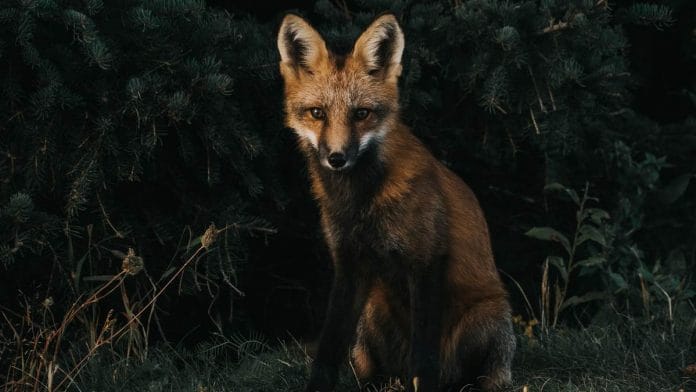To safeguard any species on the brink of extinction, one requires exact data about its physiology, actions and behaviour, natural habitat and place in the food chain.
As such data is notoriously scarce and undervalued, especially in a developing nation like India, scientists are resorting to citizen science: Ordinary people collaborating with professional researchers in an effort to gather accurate data for the advancement of scientific studies.
Fox to frogs, the understudied species
Take the Vulpes bengalensis, or the Bengal Fox — a very common yet surprisingly understudied canine in India.
Found in open grasslands all over the subcontinent, the species is considered a protected animal under the Wildlife Protection Act, 1972.
But that hasn’t stopped the people of Tamil Nadu’s Salem from engaging in Vanganari Jallikattu — an abusive ritual in which a fox captured from the wild using a hunters’ net is paraded through the village, muzzled and incapacitated, as unwitting villagers cheer on from behind, said Radhika Suryavanshi, Campaign Coordinator for PETA India.
“Our RTI requests to the state government revealed that the Vanganari Jallikattu is not a part of the locality’s traditions as some of its supporters claim,” said Suryavanshi.
In Kolkata, too, it is an ordinary sight to see a stray mongrel being kicked at, splashed with water or beaten with a stick.
“While studying for my Masters in Wildlife Biology and Conservation from the National Centre for Biological Sciences, Bengaluru, I discovered that wild canids in India were severely understudied,” said Arjun Srivathsa, a PhD candidate at the University of Florida, who discovered his love for canines during a school trip to the Bandipur National Park in December 2002.
He subsequently decided to focus his higher education on the dhole dog, which is unique because it is an endangered social carnivore that mostly inhabits dense forest habitats. Srivathsa, along with fellow researchers Iravatee Majgaonkar, Sushma Sharma, Girish Punjabi and Priya Singh, is leading the Wild Canids Project, an initiative whose primary purpose is to involve ordinary citizens in the effort to understand, document and conserve our nation’s canines.
Also read: To protect India’s elephants, we have to preserve wildlife corridors not just forests
How to get involved
There are different ways to get involved in citizen science. Volunteering yourself to a research project for the sake of field experience could be one way of doing it. And, as in the case of most projects concerning wildlife conservation, acting as an agent of science as you help gather valuable data for the advancement of efforts inside the lab could be another.
Some people have even resorted to donating their own biological material, such as blood, urine or even DNA, in order to kickstart certain citizen science projects in the healthcare sector.
The strength of citizen science is that it provides an opportunity to engage with citizens and bridge the gap between science and society.

Conservation requires public support and engagement. Involvement of naturalists, photographers, wildlife enthusiasts and citizens in these endeavours makes them stakeholders, gives them a sense of ownership, and allows for creating a conservation constituency rooted in sound science, said Srivathsa.
And he’s not the only one who thinks so.
Rising citizen science on the ground
In order to study the mortality rates of different wild animals across India’s road and rail networks, Milind Pariwakam and his peers have launched Roadkills India, a tiny mobile app that anyone can download and use to document observations of roadkills across the country.
Similarly, Hornbill Watch is a citizen science initiative dedicated to rescuing the Indian Hornbill, by asking amateur birders to submit data on hornbill sightings throughout the nation.
It was founded in 2014 by Aparajita Datta, a senior scientist at the Nature Conservation Foundation.
Birds and beasts aren’t the only target of these efforts, as Amphibians of India, an initiative led by Delhi University’s Department of Environmental Studies, is striving to create an open access database of any and all possible sightings of rare and endangered frog species.
And then there is eMammal India, an initiative aimed at rural students aged 11 to 14 in order to promote their understanding about our country’s mammal diversity. Using scientific equipment, audio and visual aids, the project aims to drive curiosity and encourage empathy towards various species of mammals within India.
As for what’s next for these initiatives, publishing the results based on the information gathered in the form of a textbook or a research paper is definitely part of the plan, said Srivathsa.
Also read: India thinks it can produce IFS officers by testing them on wildlife more than geopolitics
The data gathered with the contribution of citizen scientists will also go a long way towards identifying key areas for prioritising the conservation of these animals based on their natural habitat.
Finally, with a little cooperation from the academic sector, the information obtained could be put to good use by adding to the limited resources available in various institutions for the study of these animals.
General apathy towards animal conservation has long been a problem for this country, here is hoping that involving regular citizens in those very efforts can change the trend for the better.
Ritoban Mukherjee is a freelance science journalist based out of New Town, Kolkata. He’s curious about robots, dinosaurs and everything in between.
The report has been updated to attribute a quote that earlier appeared to be a statement made by the writer.






